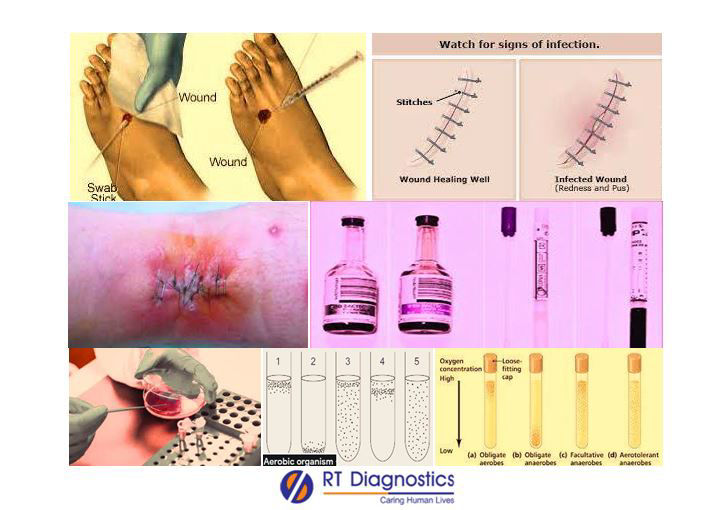Culture & Sensitivity: OT-Swab (Aerobic):
Why Culture and Sensitivity – OT Swab (Aerobic) Test?
CLINICAL INFORMATION
Infections in an operation theatre (OT) can be acquired from many different sources such as the air, surface of various articles in the OT. Some commonly found microbes that can potentially cause infections include Achromobacter, Bacillus species (Gram-positive), Staphylococcus aureus, Coagulase-negative Staphylococcus, Enterococcus species, E coli, Citrobacter, Klebsiella, Proteus, Salmonella, Pseudomonas aeruginosa (Gram-negative), Nocardia asteroids (Gram-positive), Mycobacterium tuberculosis (acid-fast), fungal spores, etc. Aerobic pathogenic infectious microbes are those, which need oxygen for their growth and hence they can grow on any unclean type of equipment and exposed surfaces. The operation theatre swab culture and sensitivity test are done to check and identify aerobic microbes on different types of equipment and surfaces in an operation theatre. The Culture and Sensitivity – OT Swab (aerobic) test are performed as a surveillance procedure to determine if OT is free from harmful microbes and thus clean enough to use for any invasive therapeutic surgeries. Sensitivity (susceptibility) test results help to assist the most effective medication and to rule out drug-resistant strains (eg. MRSA etc). This test is of absolute importance because any surgical procedures require a high level of sterility to be maintained (aseptic measures) in OT. For this purpose, the surgical OT is always subjected to fumigation (performed in case of contamination of air) and strict protocols are followed before entering and during any surgical procedures. Complications of contaminated unclean equipment and surfaces can lead to nosocomial infections and iatrogenic infections (at the surgical sites). Thus it can have serious and long-standing effects on the post-surgical patients which can lead to an extended hospital stay, increased resistance to anti-microbial medicines, long-term disability, the additional financial burden on health care systems, and rare complications that may also result in the death of a patient. Some common infections that may rarely occur after a few post-surgical cases include the infections caused by Staphylococcus, Streptococcus, Pseudomonas, etc. Clinical Signs and symptoms that may manifest in abnormal vitals like altered BP, respiratory rate, palpitation, pulse rate, etc along with or without fever, cough, cold, emesis, loose stools, infection at the site of surgery, systemic infection, abscess, Symptoms of UTI like conditions like pain and burning sensation while urinating, in infected post-operative female patients might present with redness and swelling around vagina, vaginal discharge, etc. Therefore test result provides data on the type and count of the microbes in the OT and ascertains if there is any need for disinfection and/or any antiseptics. Other tests include blood tests, gram stain, etc.

General Instructions:
Sample Requirement: Specimen – Random OT Swab specimen as guided by the physician. Test Preparation: None.
NOTE - Sample for specimen collections may vary based on the patient’s condition/cases according to the patient’s presenting complaints/signs or symptoms:
SPECIMEN REQUIREMENT (Special or Rare Cases) - As instructed and guided by Physician / Clinician / Pathologist / as per Laboratory’s requirements, according to procedures and protocols.
Sample Requirement: Random OT Swab Specimen as guided by the physician
Test Preparation: None
This Multi-Specialty Clinical Referral Laboratory RT DIAGNOSTICS provides precise and accurate tests with an extensive range of testing services to the medical centers to help in the diagnosis and identification of pathology in the test specimens for infectious diseases and also to evaluate the function of organ systems of the patient. It prevents further complications and helps to stabilize and restore health to near normalcy at the earliest without delay.



